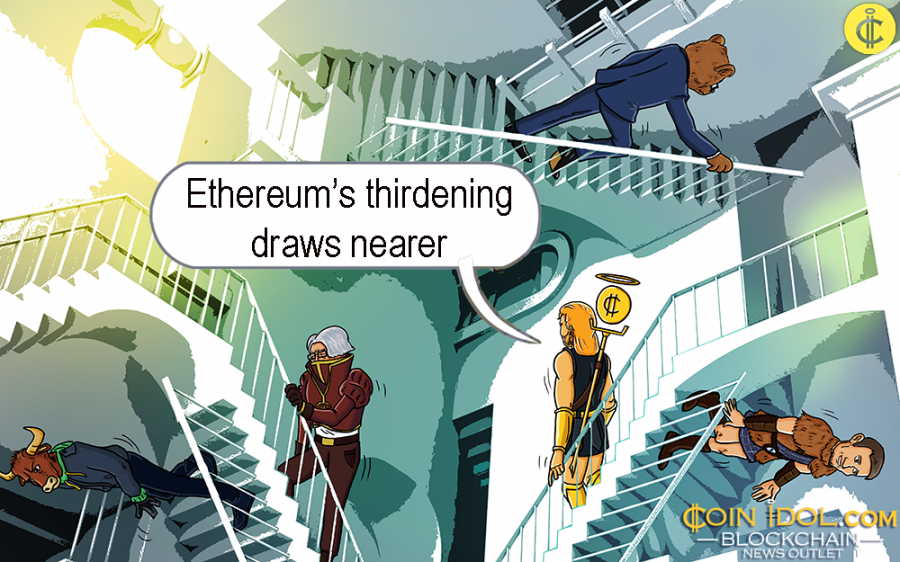Hard Fork Countdown: Ethereum’s Thirdening Draws Nearer
Updated: Jul 21, 2020 at 21:04

Ethereum’s (ETH) trading range reduced on January 15, as concentration shifted to the keenly awaited Constantinople upgrade expected in the next 24 hours. The hard fork, also known as the “thirdening” for trimming down the amount of new Ethereum discharged into circulation, is anticipated to bring technical changes to the globe’s third-biggest blockchain.
ETH/USD Quick Update
ETH’s price vacillated between $127 - $131 on Tuesday, January 15, and is standing at $121.87 USD (-5.63%) at press time. Recently, the crypto gained over 10 percent in a period of just one hour, probably in reaction to Bitcoin’s (BTC) hasty swing higher.
The surprise breakout and jailbreak relieved the risk of a fast move back to $100, which seemed certain at the beginning of this week, currently, there is not much resistance until around $160, a recently hard area to perforate for the bulls. Even though Ethereum has faced oversized trends relative to the wider market in December or so, it’s more probably to trade in lockstep with is compeers since Constantinople supply crunch bleached.
ETH still holds the third position both by trading volumes and market capitalization. According to the market cap rankings, ETH trails Ripple (XRP) by almost $200 million. Its day-to-day trading volume reached $2.92 million on Wednesday for a one-month total of over $81.5 billion, according to data from CoinMarketCap. It's only BTC and Tether (USDT) that are more actively traded.
Constantinople Upgrade: Where We Currently Stand
Constantinople is expected to go live at block 7,080,000, although pinpointing a real moment for a hardfork is always difficult. The upgrade would probably fall between Monday, January 14 and Friday, January 18. Amerdata presented a countdown that proposes that the block confirmation will happen just before midnight on January 16, 2019.
The hardfork will enforce 5 ETH Improvement Proposals (EIP), that wallop everything from block rewards to scalability. Proposal EIP 1234 will scale the magnitude of block rewards from 3 ETH to 2 ETH, thus, the “thirdening.”
In 2017, ETH enforced the Byzantium hardfork, which trimmed down the block reward from 5 ETH to 3 ETH. Dissimilar to BTC, which halves the block rewards for every 210,000 blocks, ETH doesn’t possess an upper cap on its circulation. Therefore, trimming down block rewards is meant to trim inflation by letting down the supply of newly created cryptos.
The moment Constantinople is live; ETH’s inflation rate will drop from 7.7 percent to around 4.8 percent. The chart below indicates the impact of block rewards on Ethereum supply and total inflation, according to ConsenSys.
Another hard fork countdown data resource is the website CoinGecko, which indicates similar estimates to Amber Data – forecasting the hard fork to activate at roughly 3:30 UTC Thursday, January 17.
As of Saturday, January 12, 2019, just 16.4 percent of ETH nodes were successfully upgraded for the hardfork.
However, Constantinople may be delayed because of a security vulnerability. A malicious attacker could take advantage of the vulnerability to repeatedly steal another user's ETH out of a PaymentSharer contract, according to Medium.
Price
News
News
News
Price

(0 comments)